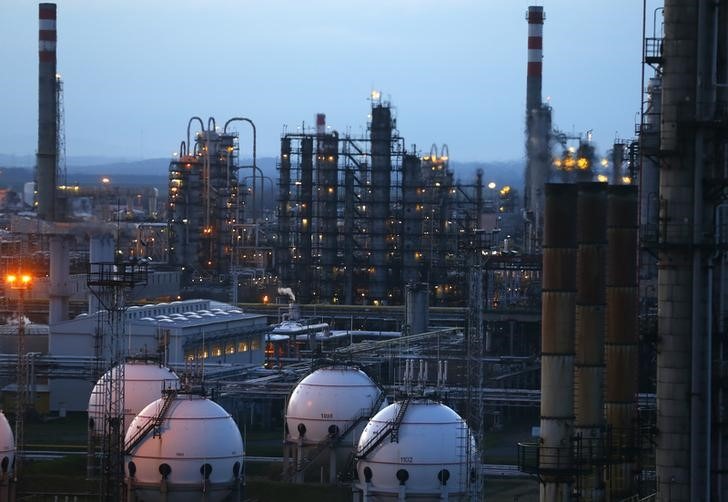Oil prices fell Tuesday amid persistent uncertainty over U.S. trade tariffs dampened the economic outlook as well as concerns over slowing demand.
U.S.-China trade war dents demand outlook
Oil prices have suffered steep losses so far in 2025, having recently slumped to a more-than four-year low on fears that increased global trade disruptions will undercut demand.
A bitter trade war between top oil consumers the U.S. and China showed little signs of deescalating, while U.S. President Donald Trump appeared to be preparing to roll out even more sweeping tariffs.
Oil markets took little relief from a Wall Street Journal report that Trump was planning to soften the blow of his steep automotive tariffs.
Fears of slowing demand, amid increased economic turmoil, have been a major weight on oil prices in recent months.
"The latest release of the U.S. economic data signalled the slowing of the economy, while China pushed back against U.S. tariffs, once again raising trade war concerns between these two countries," said analysts at ING, in a note.
Investors are braced for a busy week with a series of U.S. economic data releases, including the Federal Reserve’s preferred inflation gauge – the PCE price index, and the monthly U.S. jobs report.
The U.S. will also report its first-quarter gross domestic product data this week, while JOLTS job openings for March are due later in the session..
Russia announces surprise 3-day ceasefire with Ukraine
Oil was also pressured by Russia announcing a surprise three-day ceasefire with Ukraine in early-May. The ceasefire will run between May 8 and May 10, as Moscow commemorates the 80th anniversary of the Soviet Union’s victory over Nazi Germany.
The ceasefire offered some hope that Russia still remained open to peace, as ongoing U.S.-brokered negotiations over a ceasefire appeared to be stalling.
Ukraine called for a longer, 30-day ceasefire, while Washington signaled that it wanted a permanent ceasefire between the two countries.
Easing Russia-Ukraine tensions could eventually result in the loosening of strict U.S. sanctions on Moscow’s oil industry, freeing up more global supply and further pressuring prices.
OPEC+ set to lift production
The crude market has also been pressured by the expectation of additional supply hitting the market next month.
An OPEC+ meeting is scheduled for next week, where the cartel is widely expected to increase production for a second consecutive month.
Barclays lowered its Brent crude forecast at the start of this week by $4 to $70 a barrel for 2025 and set its 2026 estimate at $62/bbl, citing "a rocky road ahead for fundamentals" amid escalating trade tensions and OPEC+’s pivot in its production strategy.
Despite oil market fundamentals evolving "significantly better than expected" in early 2025, the bank now projects a surplus of 1 million barrels per day this year and 1.5 million b/d in 2026.












